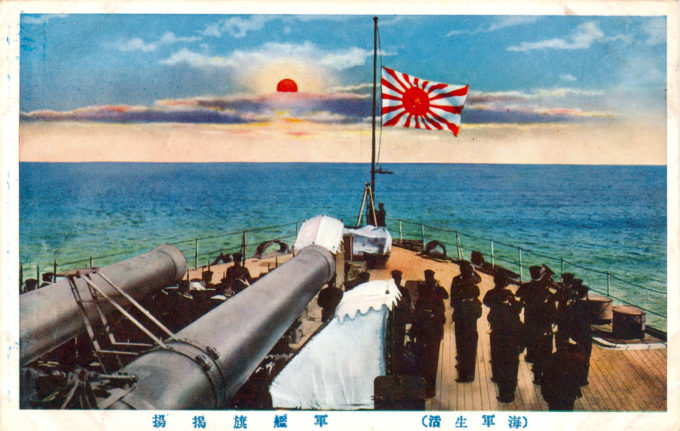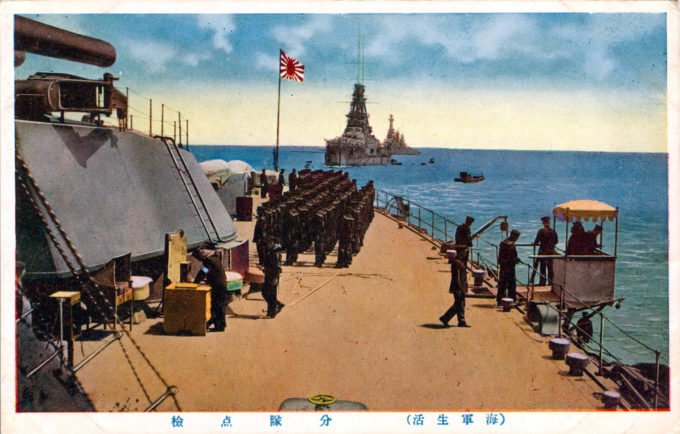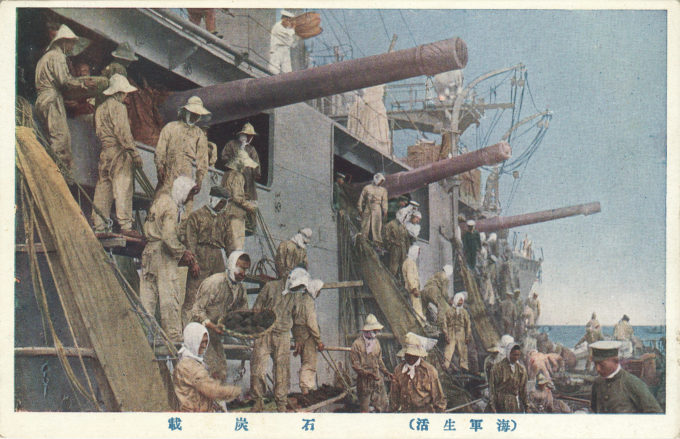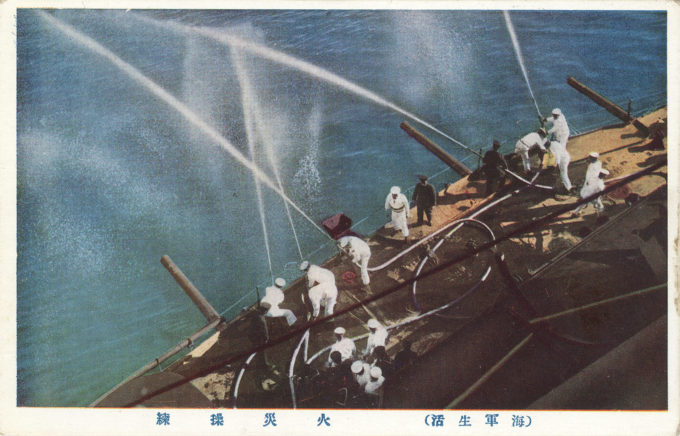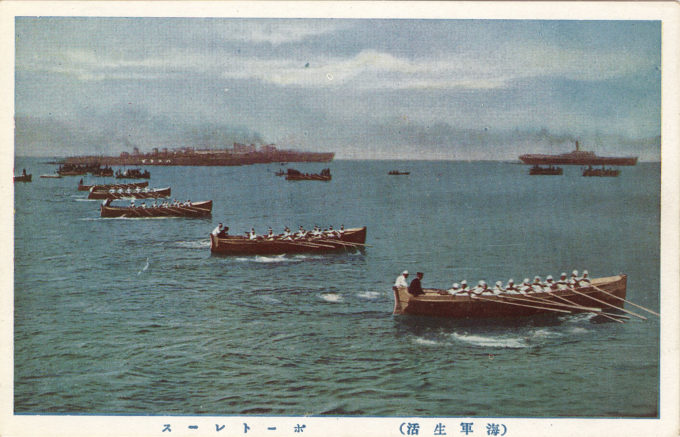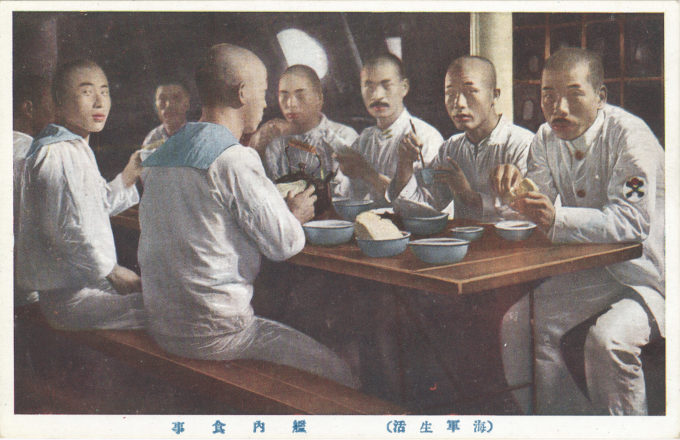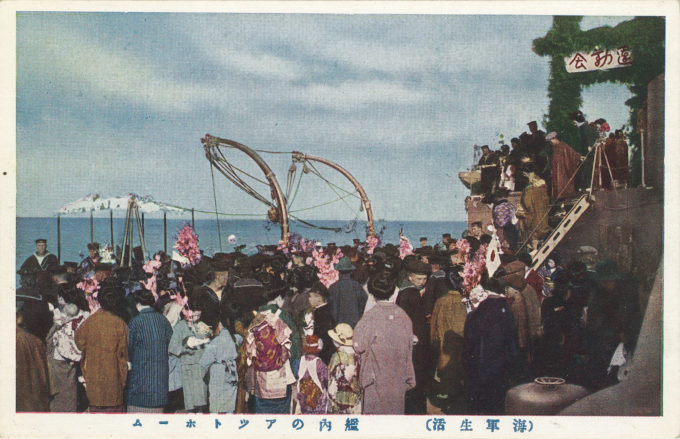See also:
The Tokyo Nautical School training ship “Taisei Maru”, 1906.
Yokosuka Naval Arsenal, c. 1910.
Imperial Japanese Navy training cruise to Hawaii, U.S.A., Mexico, Panama, 1924-1925.
Imperial Japanese Navy Shanghai Naval Landing Force (SNLF) Marine, 1932.
“The Imperial Japanese Navy (I.J.N.) was born into a period of chaos during the Meiji Restoration in Japan. Pushed to the sidelines by the army, the leaders of the I.J.N. had to figure out how to build a fleet without the traditions, technical knowledge, and operational experience most first- and even second-rate naval powers already exhibited—and how to do this for pennies on the dollar. The I.J.N.’s early admirals realized foreign nations could hold valuable lessons.
“At the outset of the 1870s, the I.J.N. had a pitiful collection of ships and crews from the former Tokugawan Shogunate and various clan navies. Few sailors had operating experience, and even fewer knew much about modern fleet tactics, strategy, or maintenance. Knowing they would need a corps of highly competent officers and enlisted personnel, the I.J.N. established a Naval Studies School.
“Recruits were sought from the more traditional elements of Japanese society, such as samurai families of the powerful clans, usually those with ambition for future government leadership. This failed to produce well-trained officers in any significant number, however, as only two graduates were commissioned from the first class in 1873. After this setback, Katsu Kaishū and Kawamura Sumiyoshi – often called the fathers of the Japanese Navy – realized the I.J.N. would need to change its practices.
“Japan adopted British training practices for sailors, opened applications to the Naval Studies School to all strata of society, and educated its officers to be experts on the technology they operated. Not only did I.J.N. leaders focus on building a strong officer corps, but they also put effort into training first-rate enlisted crews. Both officers and enlisted received intensive, continual training that kept them up to date on advances in naval technology.
“It was around this well-trained body of sailors that the I.J.N. built its fleet, and despite the ever-changing demands, the crews were always able to quickly adapt and help the I.J.N. fulfill its missions through the remainder of the 19th century. This investment in personnel development would yield sailors such as Marshal-Admiral Tōgō Heihachirō, who would lead Japan to victory at the Battle of Tsushima in 1905.
“… One observer commented that Japan’s great victories at sea around the turn of the 20th century were as much the result of the training and morale of the average Japanese seaman as they were from the effectiveness of the I.J.N.’s ships or the caliber of its guns. These victories earned Japan the respect due a first-rate navy, and the I.J.N. would dominate the western Pacific until the Second World War.”
– “Lessons from the Early Imperial Japanese Navy”, by Midshipman 4th Class Jack Montgomery, U.S.N., U.S. Naval Institute, February 2021
“The Imperial Japanese Navy was emblematic of the rise of Japan as a world power.
“In 1868, when Japan emerged from its feudal isolation to join the comity of nations, its influence in the world counted for nothing. In a few short years, by prodigious effort, it had created the sinews of political, economic, and military power. In less than thirty years it had become the leading nation in Asia. In this meteoric rise, the Imperial Japanese Navy had played a major role.
“[The I.J.N.] had come into existence not long after the American Civil War and had thus begun its life about the same time as did the ‘New American Navy’. The Imperial Japanese Navy, however, did not have the precursor of tradition, the naval infrastructure, or the industrial backing that the Americans did.
“[But] within forty years Japan had reached fifth place in the world’s navies and, by 1920, was clearly in third place. In another twenty years it was prepared to challenge the U.S. Navy and, in the three and a half years of naval war that followed, the Japanese navy gave a good account of itself against the greatest naval force on the globe. This was a remarkable achievement.”
– Kaigun: Strategy, Tactics, and Technology in the Imperial Japanese Navy, 1887-1941, by David C. Evans, Mark Peattie & David Peattie, 2015
- Looking astern on the afterdeck of a Fuso-class battleship, “Life in the Navy” postcard series, c. 1930.
- Swabbing the deck, “Life in the Navy” postcard series, c. 1930.
- Coaling, “Life in the Navy” postcard series, c. 1930.
- Fire drill, “Life in the Navy” postcard series, c. 1930.
- Racing in port, “Life in the Navy” postcard series, c. 1930.
- Special Naval Landing Force (SNLF) parade formation “Life in the Navy” postcard series, c. 1930.
- Seamen’s mess, “Life in the Navy” postcard series, c. 1930.
- Homecoming, “Life in the Navy” postcard series, c. 1930.


